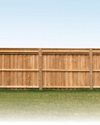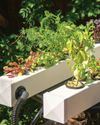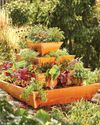The perfect blend of entertaining space and storage shed

With its exposed rough-sawn cedar framing and paneled ceiling, this is a beautiful pavilion, perfect for entertaining or just enjoying the outdoors. The shed at the rear provides more than 80 sq. ft. of storage, including 36 in. ft. of walls, so you could install 100 ft. of shelving and still, have a huge space left over for hanging up yard tools.
Materials, time and tools
Our DIY materials cost was about $5,000. We hired a contractor to pour the 30 x 32-ft. slab, which cost another $5,000. This is an advanced building project that requires a lot of attention to detail and experience with layout and complex framing. Three carpenters and occasional helpers spent eight long days on the construction, while the prepainting and staining work took one person two full days. You’ll need a complete tool arsenal, including a 1/2-in. a hammer drill, a chain saw, and scaffolding.
Start with a flat slab
You could go with a perfectly level slab; no slope. But the best slab would be level at the shed area, then slope away slightly so rainwater runs away from the building. Whether you do it yourself or hire a contractor, make sure the building area is flat. Ours wasn’t, and that cost us hours of complicated compensating. A 4-in.-thick slab will be fine, but thicken the slab under the four sets of 6x6 posts to a 4 x 4-ft. area 8 in. deep.
Prepaint and stain everything!
It will take many hours to paint all the siding, trim and ceiling panels and stain the cedar parts. But it’s worth doing before starting construction. It’s a much larger job after the construction is complete, and the finished project won’t look nearly as crisp. You’ll still have touch-up work to do, but that will take only a couple of hours.
Mark the layout
This story is from the July - August 2019 edition of Family Handyman.
Start your 7-day Magzter GOLD free trial to access thousands of curated premium stories, and 9,000+ magazines and newspapers.
Already a subscriber ? Sign In
This story is from the July - August 2019 edition of Family Handyman.
Start your 7-day Magzter GOLD free trial to access thousands of curated premium stories, and 9,000+ magazines and newspapers.
Already a subscriber? Sign In

7 Bicycle Maintenance Tips
Keep your bike in tiptop shape and ride safe!

SETTING FENCE POSTS WITH EXPANDING FOAM
Any fence builder knows you need strong posts for a strong fence, and that means backfilling the postholes with a dense, hard material other than dirt.

PEBBLE MOSAIC STEPPING STONES
COLLECT SOME RIVER ROCK AND MAKE YOUR OWN UNIQUE STEPPINGSTONE PATH

EARTH-FRIENDLY WEED KILLERS
HEALTHIER CHOICES FOR HUMANS AND THE ENVIRONMENT

DIY! HYDROPONIC GARDEN
FRESH VEGETABLES AT YOUR FINGERTIPS

GROW MINI VEGETABLES
GROW A GARDEN IN A TINY SPACE!

BUILD A VERTICAL GARDEN
TIME TO GROW UP!

MODERN WATER FOUNTAINS
A SPLASH OF PEACE FOR YOUR PATIO

9 ALTERNATIVE USES FOR SAWDUST
Every fully stocked wood shop has a table saw. You can usually find a pile of sawdust under it, even if it's used only occasionally. If a shop has a belt sander or band saw, there's probably another pile of finer sawdust under that. Even people without stationary tools have sawdust accumulation on their workbenches.

INSULATE WITH FOAM
IT'S A GREAT ALTERNATIVE TO FIBERGLASS